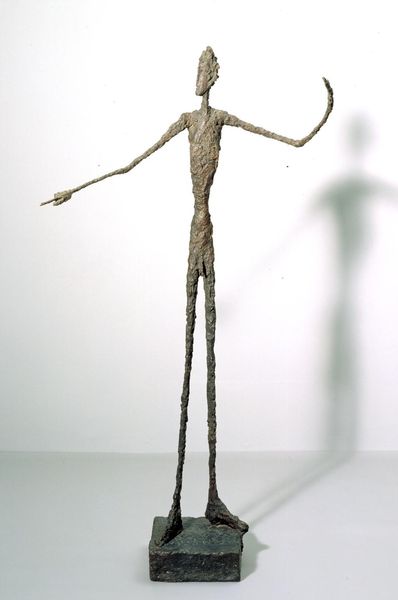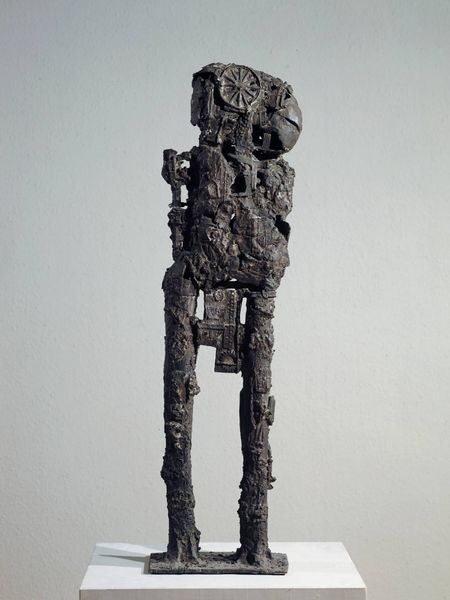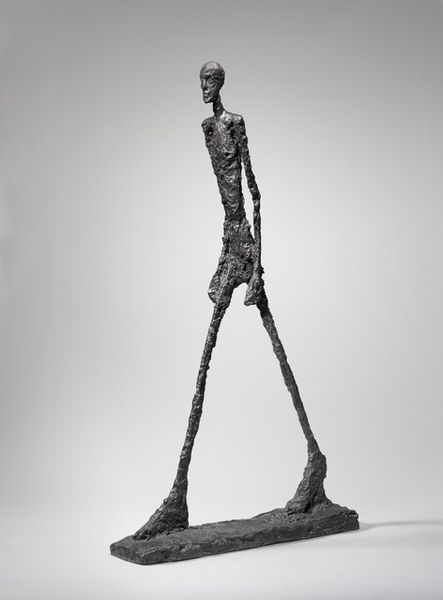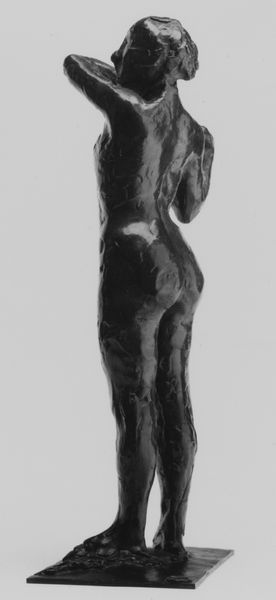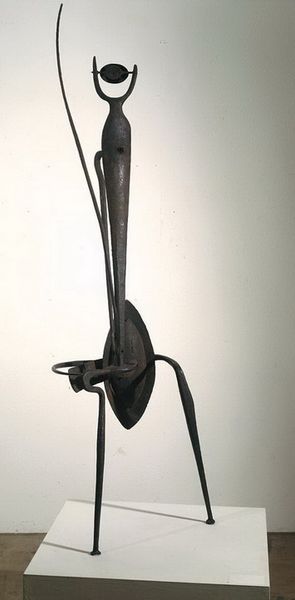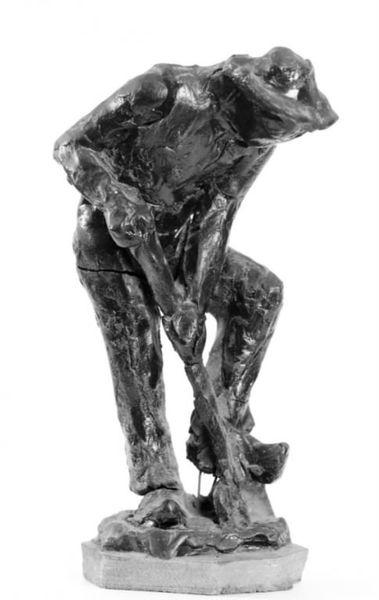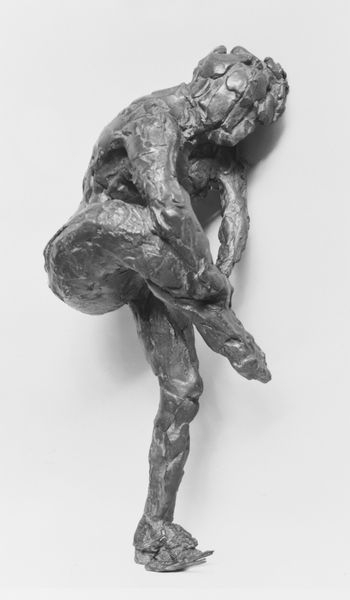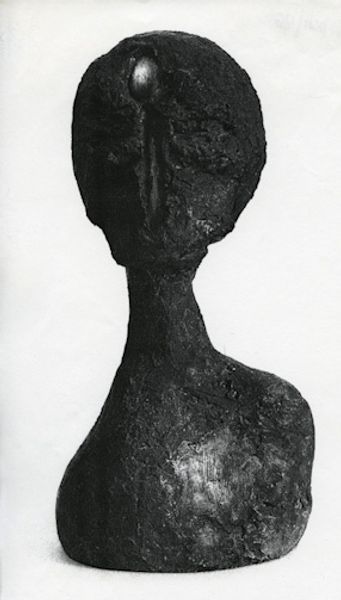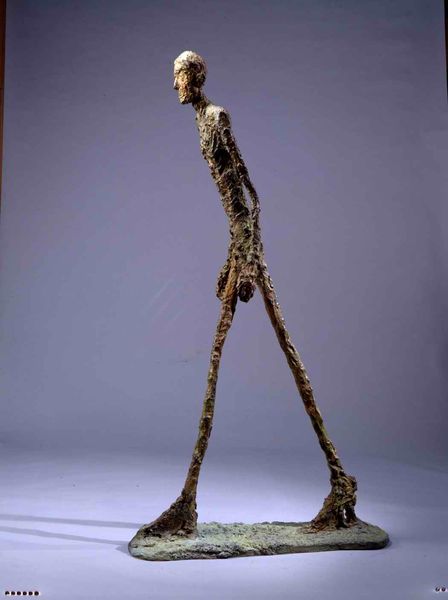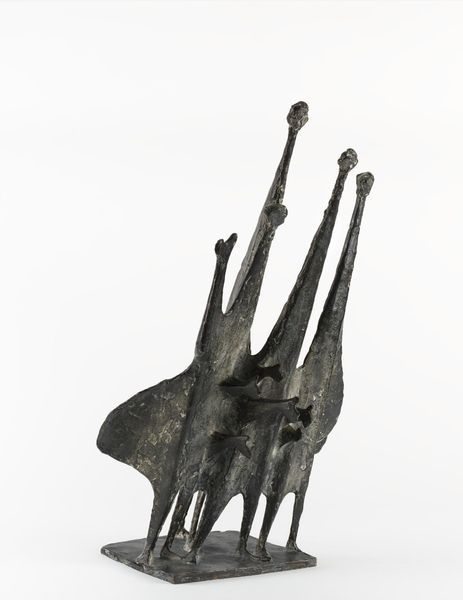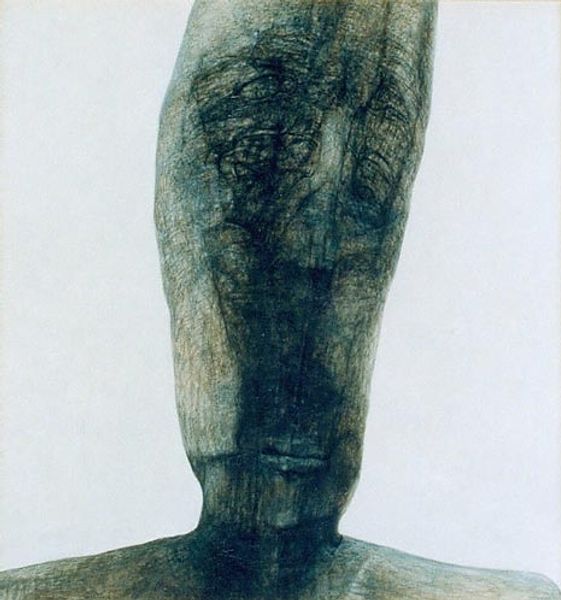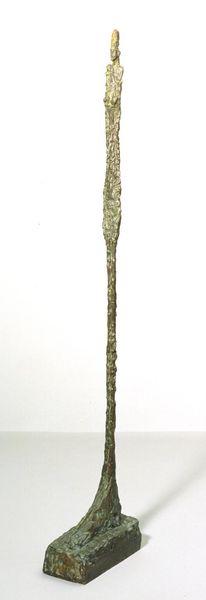
Dimensions: object: 651 x 121 x 200 mm
Copyright: © The Estate of Alberto Giacometti (Fondation Giacometti, Paris and ADAGP, Paris), licensed in the UK by ACS and DACS, London 2014 | CC-BY-NC-ND 4.0 DEED, Photo: Tate
Editor: So, this is Alberto Giacometti's "Standing Woman," and looking at her elongated form, I can't help but feel this overwhelming sense of fragility and loneliness. What strikes you most about this piece? Curator: It's like Giacometti is wrestling with the very essence of being, isn't it? The way he pares down the figure, almost to a whisper, speaks volumes about the post-war existential angst. Do you feel a sense of resilience too, in that verticality? Editor: I do, now that you mention it. It's a strange mix of vulnerability and strength. Curator: Exactly! It's as if she's been through the fire, but she's still standing, gazing into some distant horizon. Art can be so powerful. Editor: I see it now. I appreciate how you pointed out that complexity.
Comments
tatemodern 7 months ago
⋮
http://www.tate.org.uk/art/artworks/giacometti-standing-woman-t00777
Join the conversation
Join millions of artists and users on Artera today and experience the ultimate creative platform.
tatemodern 7 months ago
⋮
During the late 1950s, Giacometti made a number of fragmentary figures with their arms partly or entirely missing. Their slender forms appear vivid yet fragile. The writer Jean Genet (1910–1986) commented: 'The resemblance of his figures to each other seems to me to represent that precious point at which human beings are confronted with the most irreducible fact: the loneliness of being exactly equivalent to all others.' Gallery label, March 2025


